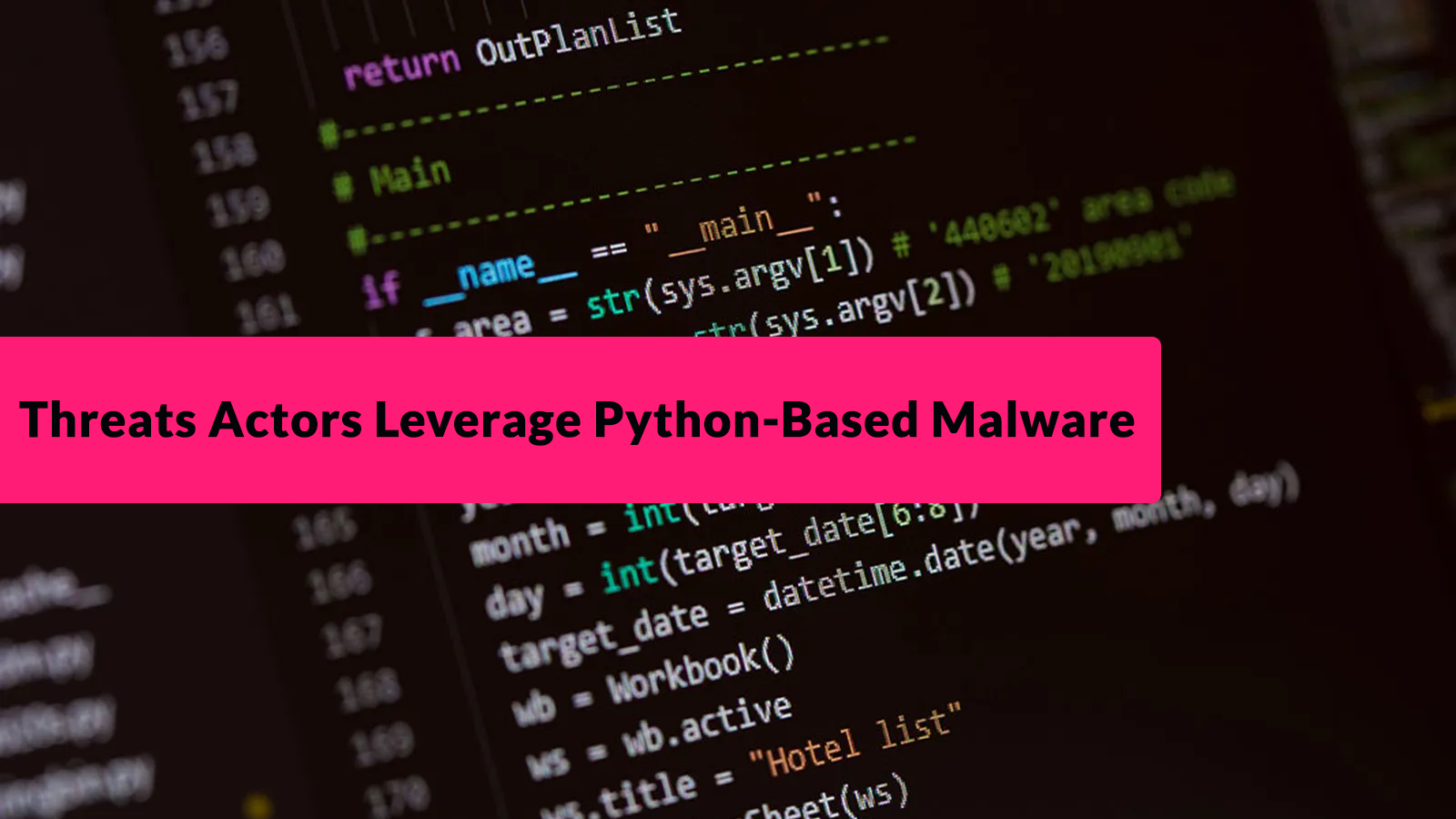
Threats Actors Leverage Python-based Malware to Inject Process into a Legitimate Windows Binary
Cybersecurity’s evolving landscape frequently introduces new challenges, and a recent discovery by cybersecurity researchers highlights a particularly insidious development: sophisticated Python-based malware now leveraging process injection to hide within legitimate Windows binaries. This technique represents a significant shift in attacker methodologies, blending multi-layer obfuscation with trusted system utilities to achieve stealth and persistence. Understanding this threat is critical for IT professionals, security analysts, and developers looking to fortify their defenses against advanced persistent threats (APTs) and fileless attacks.
The Evolving Threat of Python-Based Malware
The ubiquity and flexibility of Python have made it an increasingly popular choice for developers, and unfortunately, for threat actors as well. Its cross-platform compatibility and extensive libraries enable rapid development of powerful, yet often difficult-to-detect, malicious tools. The current trend suggests a move beyond simple Python scripts to complex frameworks designed for evasion. This new strain of malware exemplifies this evolution by packaging a full Python runtime environment directly into its payload.
Process Injection: A Deceptive Cloak
Process injection is a well-established technique where malicious code is inserted into a legitimate, running process. This allows the attacker’s code to execute under the guise of a trusted application, making detection challenging for many traditional security solutions. The Python-based malware detailed by researchers takes this a step further by not only injecting into a legitimate Windows binary but also leveraging the context of that trusted process to deploy its own Python environment. This creates a powerful illusion of legitimacy, as the malicious activities appear to originate from a system-sanctioned application.
The core principle behind this attack involves:
- Masquerading: The malware positions itself to appear as a harmless or essential system file.
- Runtime Environment Deployment: A complete Python runtime is loaded, enabling the execution of complex Python scripts for various malicious activities.
- Evasion of Detection: By operating within a legitimate process, the malware bypasses many file-based and signature-based detection mechanisms.
Multi-Layer Obfuscation and Fileless Attack Strategies
A key characteristic of this sophisticated Python malware is its use of multi-layer obfuscation. This involves employing various techniques to scramble, encrypt, or otherwise conceal the malicious code, making static analysis and reverse engineering significantly more difficult. Combine this with fileless attack strategies, where malware resides solely in memory and avoids writing to disk, and you have a highly resilient and evasive threat. This malware’s ability to operate largely in memory and leverage trusted processes makes it a prime example of a fileless attack, blurring the lines between legitimate system operations and malicious activities.
Remediation Actions for Enhanced Security
Countering such advanced Python-based malware requires a multi-layered security approach. IT professionals and security teams should prioritize the following actions to mitigate risk:
- Endpoint Detection and Response (EDR) Solutions: Implement advanced EDR platforms capable of monitoring process behavior, detecting anomalies, and identifying suspicious activity within legitimate processes. EDR tools can often detect the memory-resident activities characteristic of fileless attacks.
- Application Whitelisting: Strictly control what applications and executables are allowed to run on endpoints. This can prevent unauthorized Python interpreters or malicious scripts from executing.
- Regular Software Updates and Patching: Ensure all operating systems, applications, and security software are routinely updated. Patches often address vulnerabilities that threat actors exploit for initial access or privilege escalation.
- Network Segmentation: Isolate critical systems and sensitive data through network segmentation to limit the lateral movement of malware once an initial compromise occurs.
- User Awareness Training: Educate users about phishing, social engineering, and the dangers of opening suspicious attachments or clicking on malicious links, as these are common initial vectors for such attacks.
- Behavioral Analysis and Threat Hunting: Proactively hunt for indicators of compromise (IOCs) and analyze system behavior for deviations from the norm. This includes monitoring process injection attempts, unusual process-to-process communication, and unexpected network connections.
- Principle of Least Privilege: Enforce the principle of least privilege for all users and applications, minimizing the potential damage if an account or process is compromised.
Tools for Detection and Mitigation
Leveraging the right security tools is paramount in detecting and mitigating advanced threats like Python-based process injection malware.
| Tool Name | Purpose | Link |
|---|---|---|
| Sysmon | Advanced system monitoring, logging process creations, network connections, and file system activity. | https://learn.microsoft.com/en-us/sysinternals/downloads/sysmon |
| Procmon | Real-time file system, Registry, and process/thread activity monitoring. | https://learn.microsoft.com/en-us/sysinternals/downloads/procmon |
| YARA Rules | Pattern matching tool for identifying and classifying malware. Can be used for custom rule creation. | https://virustotal.github.io/yara/ |
| Volatility Framework | Advanced memory forensics framework for extracting digital artifacts from volatile memory (RAM) samples. | https://www.volatilityfoundation.org/ |
| Threat Intelligence Platforms | Aggregates and analyzes threat data to provide context and actionable intelligence on emerging threats and IOCs. | (Varies by vendor, e.g., Mandiant, CrowdStrike Falcon Intelligence) |
Conclusion
The emergence of Python-based malware employing sophisticated process injection techniques within legitimate Windows binaries underscores a critical shift in attacker strategies. This approach, marrying Python’s versatility with stealthy fileless execution and multi-layer obfuscation, poses a significant challenge to conventional cybersecurity defenses. Staying ahead requires a proactive stance: implementing robust EDR, enforcing strict application controls, conducting continuous threat hunting, and ensuring comprehensive user education. Organizations must evolve their security posture to combat these increasingly evasive and potent threats to protect their critical assets and data.




